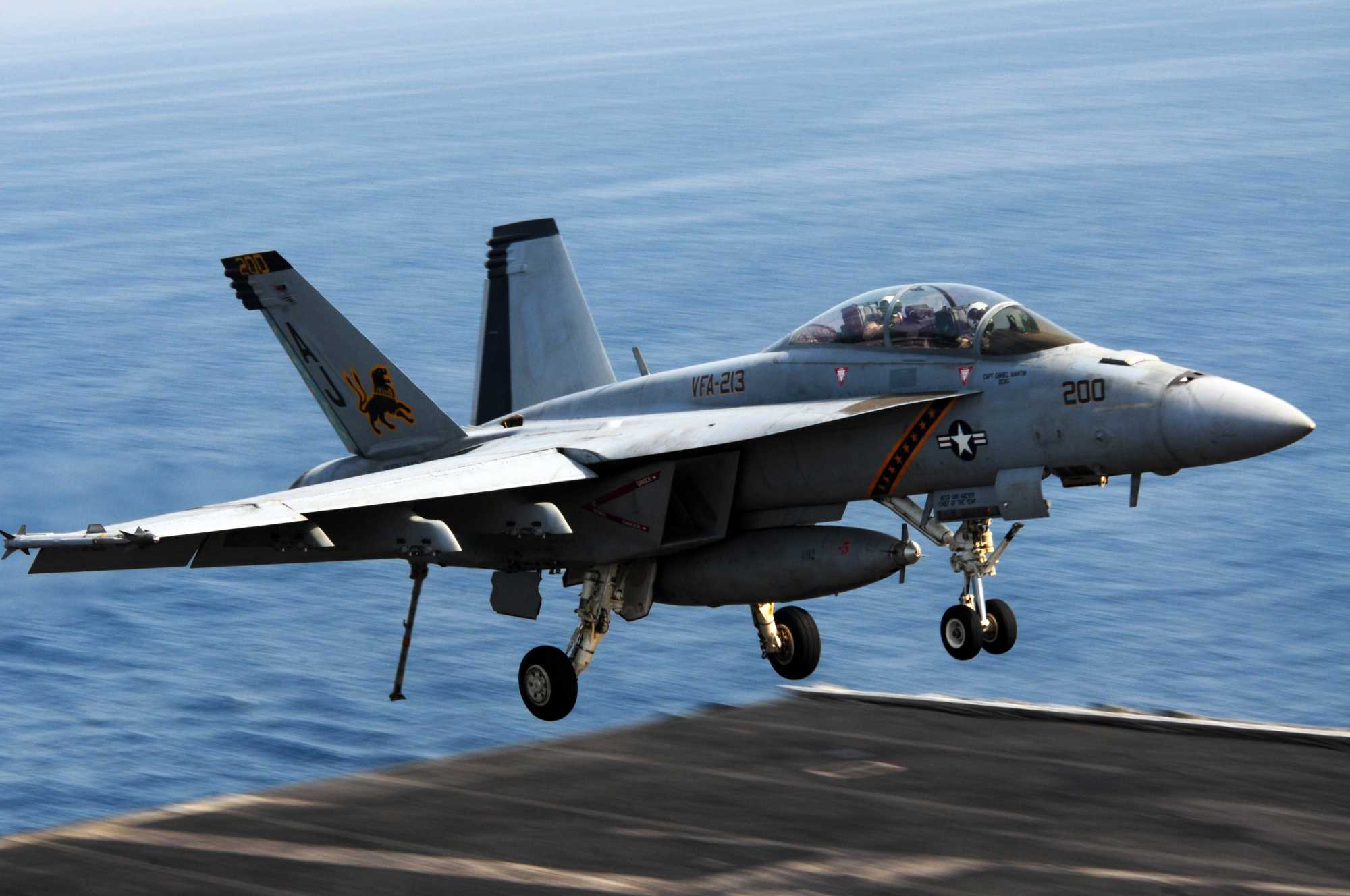After “Heavy Losses”, U.S. F/A.-18 Super Hornets Loaded On USS Harry S Truman Head Back Home; B-2 Stealth Bombers Join In!

The B-2 stealth bombers and USS Harry S. Truman aircraft carrier loaded with F/A-18 Super Hornets have been the face of the US campaign against the Yemen-based Houthi militia. However, these military heavyweights are finally returning home after Donald Trump unilaterally declared victory.
The B-2 bombers started returning home to Whiteman Air Force Base, Missouri, on May 9 after a deployment to Diego Garcia. On May 19, Whiteman AFB published a video of these bombers heading back to base.
“You can’t fight what you can’t see,” it said on X, likely referring to the stealth capability of the aircraft.
In March 2025, the US amassed nearly half a dozen B-2 stealth bombers, several refueling tankers, and transport aircraft at an air base in the British territory of Diego Garcia. These bombers were used to bomb the Houthi-controlled territory in Yemen as part of Operation Rough Rider. The distance between Diego Garcia and Yemen is just over 3,600 kilometers.
The deployment of long-range bombers to Diego Garcia was notable. The base’s infrastructure and location have consistently made it a linchpin for US power projection and military operations in the Middle East and Asia, as seen in the Gulf War, Iraq War, and Afghanistan War.
Nonetheless, there was a lot of hoopla around the sudden deployment of B-2s, which was first revealed by flight-tracking data published by Open Source Intelligence (OSINT) analysts. The B-2s, also referred to as the “ghosts of the sky,” are capable of delivering precise, lethal strikes through even the most sophisticated air defenses. Their deployment made headlines as Trump threatened to rain hell on the Houthis.
However, a lot changed in the next few days.
On May 6, Donald Trump announced a ceasefire when the campaign did not yield “desired results” and led to military losses for the US instead.
On May 7, the B-2s were joined by four B-52 bombers, bringing the US bomber fleet in the island territory to 10. However, two days later, the B-2s started departing. The EurAsian Times could not confirm if all B-2s are back at base.
Currently, the B-52s are at Diego Garcia for a Bomber Task Force (BTF) mission. According to reports, they have since been joined by the F-15E from Japan’s Kadena Air Base.
In addition to the B-2 bombers, the USS Harry S. Truman Carrier, carrying the F/A-18 Super Hornet fighter jets, will also return home soon.
USS Truman essentially became the face of the US campaign against the Houthis in the Red Sea after its deployment was extended amid rising hostilities. The carrier, which had been deployed to the region for much longer, was later joined by USS Carl Vinson, which is still operating under the US CENTCOM area of responsibility.
After eight months of deployment, the Truman transited the Suez Canal to the Mediterranean Sea over the weekend. It is currently participating in the NATO Neptune Strike drills, following which it will head back home to Naval Station Norfolk.
This carrier proved to be instrumental against the Houthis. However, it suffered several setbacks, including losing three F/A-18 Super Hornet fighter jets in less than six months and colliding with a merchant ship near Egypt.
Notably, the return of these high-value assets from the Middle East theatre comes after the US suffered losses running into billions of dollars in combat against the Houthis, which may have forced Trump to agree to a ceasefire mediated by Qatar.

Demobilisation
A report published by The New York Times on May 12 claimed that the US decided to end its bombing campaign against the Yemen-based Houthi militia after facing unprecedented losses like those of the MQ-9 Reaper drones and F/A-18 Super Hornets, and a near loss of the F-35 Lightning II stealth fighter.
The operation’s goal was to completely destroy the militia, which constituted a serious threat to Red Sea commercial shipping in addition to serving as Iran’s proxy in the West Asian region. Operation Rough Rider was initiated after the Houthis threatened to relaunch attacks on Israeli ships in the Red Sea if the ceasefire in Gaza was broken.
While Trump expected results within 30 days, the US had not achieved air superiority by Day 31. The bombing campaign, on the other hand, proved to be too costly to be viable, with reports indicating that the first month alone cost almost US$1 billion in munitions.
In the first 30 days alone, the Houthis managed to destroy seven American MQ-9 drones, worth about US$30 million apiece, making it increasingly difficult for the Central Command to detect and target the Houthi targets.
The biggest claim made by the report was that the Houthi air defenses nearly destroyed an F-35 fighter plane and multiple American F-16s, increasing the likelihood of American casualties.
The prospect of an F-35 stealth aircraft being hit likely prompted the Americans to wind up their operations. A potential loss of the F-35 in the Houthi fire would have been a major embarrassment for the US Navy.
Another decisive factor that may have ended the operation could be the Super Hornet losses. In over a week, the US lost two F/A-18 Super Hornet fighter jets, both of which plummeted into the Red Sea.
The first aircraft went down on April 28 when the carrier conducted an evasive manoeuvre to avoid enemy fire, whereas the second aircraft plunged following a failed night-time landing. Before that, in December 2024, one Super Hornet was lost to friendly fire.

One Super Hornet costs about US$60 million, which means that the US lost US$120 million worth of Super Hornet fighters during Operation Rough Rider and US$180 million worth of Super Hornets overall.
More than a month after this campaign began, the Houthi militia was far from being decimated. Frustrated by the lack of progress and apprehensive of a protracted Middle East conflict, Trump chose an exit plan.
His Middle East envoy, Steve Witkoff, communicated an Omani-mediated compromise on May 5, 2025: the US would stop its bombing, and the Houthis would cease attacking American ships in the Red Sea, but they could still attack shipping associated with Israel.
That same day, the US stopped the offensive. Trump announced the truce on May 6, 2025, at an unrelated meeting with Canadian Prime Minister Mark Carney in the Oval Office.
While the Houthis hailed the ceasefire as a victory over the US, President Trump said the Houthis had “capitulated”, despite his earlier pledge to “annihilate” them.
- Questions and Answers
- Opinion
- Motivational and Inspiring Story
- Technology
- Live and Let live
- Focus
- Geopolitics
- Military-Arms/Equipment
- Seguridad
- Economy
- Beasts of Nations
- Machine Tools-The “Mother Industry”
- Art
- Causes
- Crafts
- Dance
- Drinks
- Film/Movie
- Fitness
- Food
- Juegos
- Gardening
- Health
- Home
- Literature
- Music
- Networking
- Other
- Party
- Religion
- Shopping
- Sports
- Theater
- Health and Wellness
- News
- Culture

